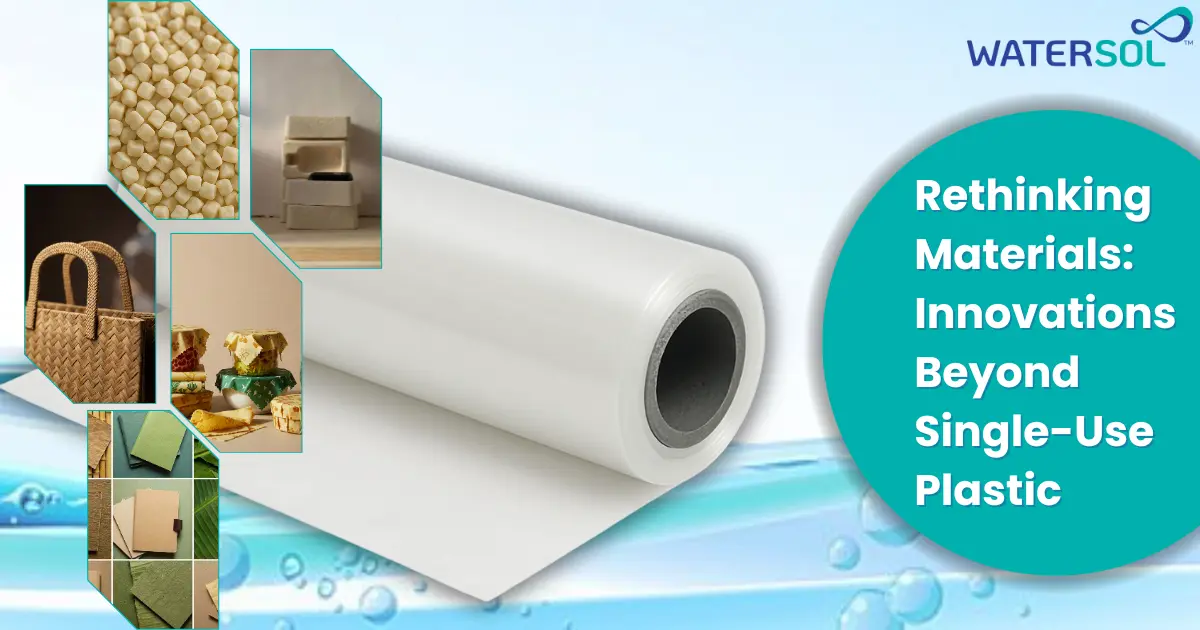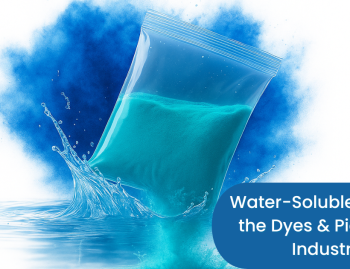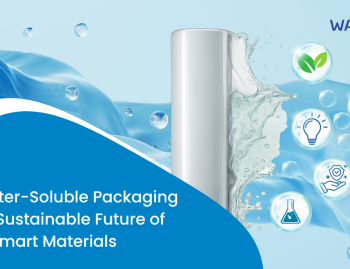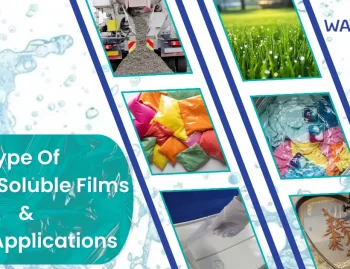
The Plastic Problem: Why Sustainable Alternatives Matter
Plastic has become inseparable from modern life — it’s in our homes, cities, oceans, and even the air we breathe. The issue lies in the fact that plastic never fully biodegrades. Instead, it breaks down into microscopic fragments known as microplastics and nanoplastics, which end up contaminating soil, water bodies, and even the food we eat (National Geographic, 2019).
Every year, the world produces over 500 billion plastic bottles (Statista, 2022). In 2020 alone, plastic production exceeded 500 million tonnes — more than twice the amount produced in 1980 (UNEP, 2021). Shockingly, over 150 million tonnes of plastic waste have already entered our oceans, with 8 million tonnes more added each year (Ellen MacArthur Foundation, 2016).
If we don’t act, by 2050 there could be more plastic than fish in our oceans by weight. This crisis not only endangers marine life but also threatens human health as plastic particles increasingly infiltrate our air, water, and food.
Changing Habits, Shifting Perspectives
Solving this crisis begins with rethinking our daily choices. Simple actions like reusing and repurposing plastic items — bottles, containers, and bags — can significantly reduce waste. Opting for reusable, compostable, or dissolvable alternatives over disposable plastics can make a real difference.
When these habits spread through families, workplaces, and communities, the impact is multiplied.
However, personal efforts alone won’t solve the problem. Large-scale, innovative solutions are needed — ones that can replace conventional plastic without sacrificing convenience or functionality.
Sustainable Alternatives to Single-Use Plastic
One of the most promising advancements in sustainable packaging is Water-Soluble Film technology — a biodegradable, dissolvable material that’s gaining momentum across multiple industries. Let’s explore how this and other alternatives are reshaping packaging.
Water-Soluble Packaging Applications
Water-soluble films dissolve completely in water — cold, warm, or hot — leaving no trace or residue. Here’s where they’re making an impact:
Water-Soluble Pouches: Perfect for detergents, cleaning products, agrochemicals, and food packaging. They reduce handling risks and eliminate plastic waste.
Water-Soluble Laundry Bags: Commonly used in hospitals, hotels, and laundries to safely contain soiled linen, dissolving during the wash cycle, preventing contamination and packaging waste.
Water-Soluble Soap Films: Lightweight soap strips that dissolve in water, ideal for travel, outdoor use, and emergencies. Many are antimicrobial and scented.
Water-Soluble Mold Release Films: Used in resin molding industries for polyester, epoxy, and thermosetting resins. These dissolve in water after use, improving safety and operational efficiency.
Water-Soluble Agrochemical Packaging: Provides safe, pre-measured sachets of pesticides and fertilizers, dissolving in water for accurate, contact-free dosing.
Water-Soluble Films for Cement, Dyes, Enzymes & Additives: Simplify industrial mixing processes by dissolving directly into water — reducing spills, exposure risks, and environmental contamination.
Other Sustainable Plastic Alternatives
While water-soluble films lead in versatility, other eco-friendly materials are helping reduce plastic waste:
Biodegradable Polymers (PLA, PHA, PBAT)
Description: Plant-based or bio-synthesized materials that naturally break down in composting conditions.
Popular Types:
• PLA (Polylactic Acid): From corn starch, sugarcane, or cassava.
• PHA (Polyhydroxyalkanoates): Made by microbial fermentation.
• PBAT (Polybutylene Adipate Terephthalate): A compostable, starch-based polymer blend.
Applications:
• Disposable cutlery, straws, and cups
• Food packaging and trays
• Agricultural films
• Compostable medical disposables
Pros:
• Compostable in industrial settings
• Lower carbon footprint than petroleum-based plastics
Limitations:
• Require specific composting conditions
• Some contain fossil-derived components
Edible Packaging
Description: Packaging made from food-grade, edible materials like seaweed, rice paper, or milk proteins.
Applications:
• Candy, chocolate, and ice cream wrappers
• Single-serve beverage capsules
• Edible cutlery and straws
Pros:
• Zero waste — can be eaten
• Safe, natural, and biodegradable
Limitations:
• Limited shelf life
• Sensitive to moisture and heat
Compostable Plant-Based Bags
Description: Made from starch, corn, or cellulose, these bags decompose into organic matter under composting conditions.
Applications:
• Grocery bags
• Compost bin liners
• Food waste bags
Pros:
• Compostable at home and in industrial settings
• Reduce landfill waste
• Limitations:
• Less durable than plastic
• Not suitable for heavy-duty use
Reusable Beeswax Wraps
Description: Cloth wraps infused with beeswax, resin, and oils — a natural, reusable alternative to cling film.
Applications:
• Wrapping sandwiches, fruits, vegetables
• Covering bowls and plates
Pros:
• Reusable for up to a year
• Naturally antibacterial
• Compostable after use
• Limitations:
• Not suitable for raw meat or hot food
• Requires occasional re-waxing
Mushroom Packaging (Mycelium)
Description: Made by growing mycelium (mushroom roots) around agricultural waste like hemp or corn husks.
Applications:
• Packaging for electronics and fragile items
• Furniture padding
• Eco-friendly insulation
Pros:
• Fully compostable at home
• Low energy production
• Limitations:
• Limited availability
• Slower production process
Paper-Based and Natural Fiber Alternatives
Description: Packaging made from kraft paper, hemp, jute, cotton, or palm leaves.
Applications:
• Shopping bags and food wraps
• Paper straws
• Compostable plates, bowls, and packaging fillers
Pros:
• Widely recyclable and compostable
• Good consumer acceptance
Limitations:
• Water and energy-intensive production
• Limited barrier properties for moisture and grease
Why Water-Soluble Films Lead the Way
While these alternatives are valuable, Water-Soluble Films stand apart due to their:
• Immediate, total biodegradability in water — leaving no trace
• High versatility across healthcare, agriculture, manufacturing, hospitality, textiles, and packaging
• Operational safety by eliminating direct contact with hazardous or contaminated materials
• Excellent barrier performance against gases, oils, and solvents while remaining water-soluble
Where other options may need special composting conditions or have limited applications, Water-Soluble Films offer a practical, scalable, and safe replacement for single-use plastic.
Conclusion
With billions of plastic items polluting our environment, the need for eco-friendly, high-performance alternatives is more pressing than ever.
Water-Soluble Film technology is a dynamic, scalable, and impactful solution — transforming industries and reducing plastic waste without sacrificing convenience or safety. Alongside promising alternatives like biodegradable polymers, edible packaging, plant-based bags, and mushroom-based materials, these films are paving the way toward a cleaner, more sustainable, and plastic-free future.





